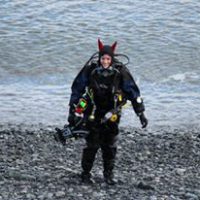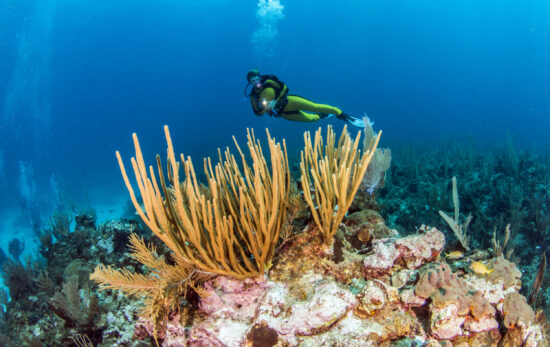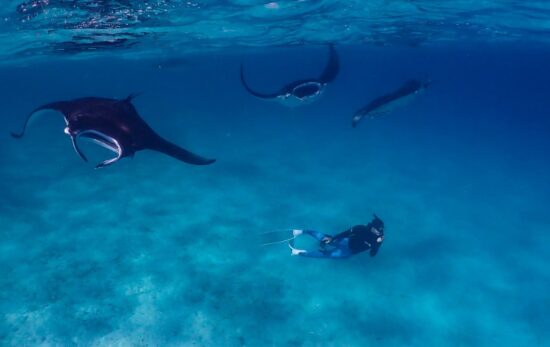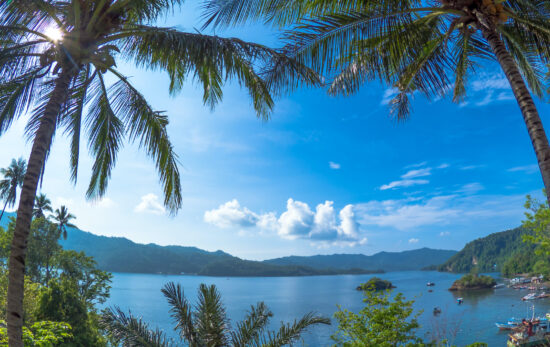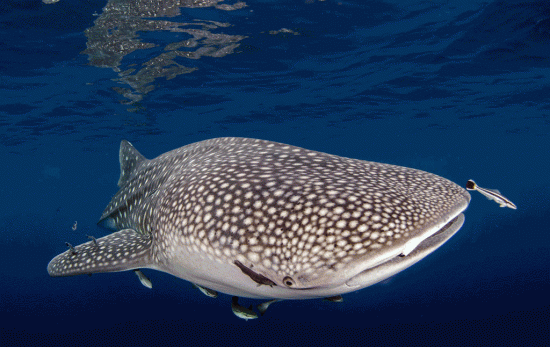A shore dive is any dive where you enter the water from the land rather than a boat. Booking a vacation to one of the best shore diving destinations is a perfect way to explore local dive sites and marine life at a relaxing pace that suits your schedule.
With usually calm conditions, shore dives are often a popular choice for PADI courses, new divers, and snorkelers — but don’t let that fool you into thinking there’s not much on offer. In fact, there are countless scuba diving destinations across the globe where shore diving easily rivals offshore sites. There are majestic canyons and topography, world-class shipwrecks, and even underwater museums. You can also encounter creatures great and small, from dugongs and dolphins to the tiniest critters and invertebrates.
So, read on for the best shore diving destinations — from renowned favorites to hidden secrets.

1. Bonaire
If you’re wondering which Caribbean island has the best shore diving, look no further. Bonaire flaunts over 80 dive sites, most of which can be explored straight from the beach. Many are signposted from land and even have underwater markers to help navigation. You’ll also be surrounded by over 470 fish species, like angelfish, tarpon, octopuses, moray eels, crustaceans, and turtles. No wonder this is the ‘shore diving capital of the world’! You’ll find most of Bonaire’s must-dive sites along the leeward coast, from the famous Hilma Hooker shipwreck to the staggering drop-offs and elkhorn corals of Karpata. Adventurous divers might head east, where braving the wilder shores can lead to sightings of sharks and mantas.
When you are not underwater, there is plenty to do and see on Bonaire itself. Visit the donkey sanctuary, view the flamingoes, enjoy trekking, or simply make your way around the beautiful restaurants and try some of the local cuisine.
When to go: Being outside the hurricane belt, the island is generally warm and dry year-round, averaging 29ºC/84ºF in the water. You’ll find the best Bonaire diving conditions between April and November.
Recommended Dive Resorts:
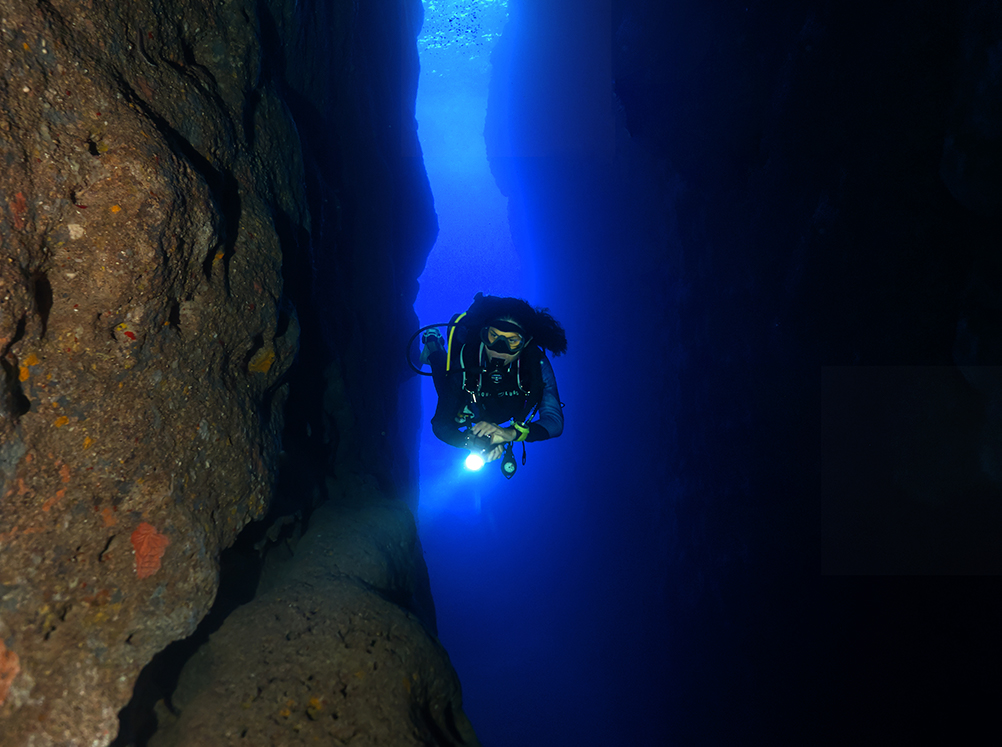
2. Malta and Gozo
These Mediterranean islands are an explorer’s playground with a vast assortment of wrecks, caves, caverns, tunnels, and gullies. On Malta, divers can step from the shore into maritime history with wrecks, such as the HMS Maori and Um El Faroud. Don’t miss the spectacular night dives at Ghar Lapsi or the stunning underwater archway at Cirkewwa Reef. On the quieter island of Gozo, you’ll find Dwejra, one of the best places for shore diving. It’s home to the region’s acclaimed Blue Hole, the Azure Reef (previously the Azure Window until its collapse in 2017), and an abundance of colorful corals and creatures: sea stars, jellyfish, squid, scorpionfish, parrotfish, seahorses, and stingrays — to name just a few!
When to go: The warmest months are July to August, with sea temperatures reaching 28ºC/82ºF – but this is also the busiest time to visit. In winter, the water rarely drops below 13ºC/55ºF, so it is possible to dive here all year round.
Recommended Dive Resort:
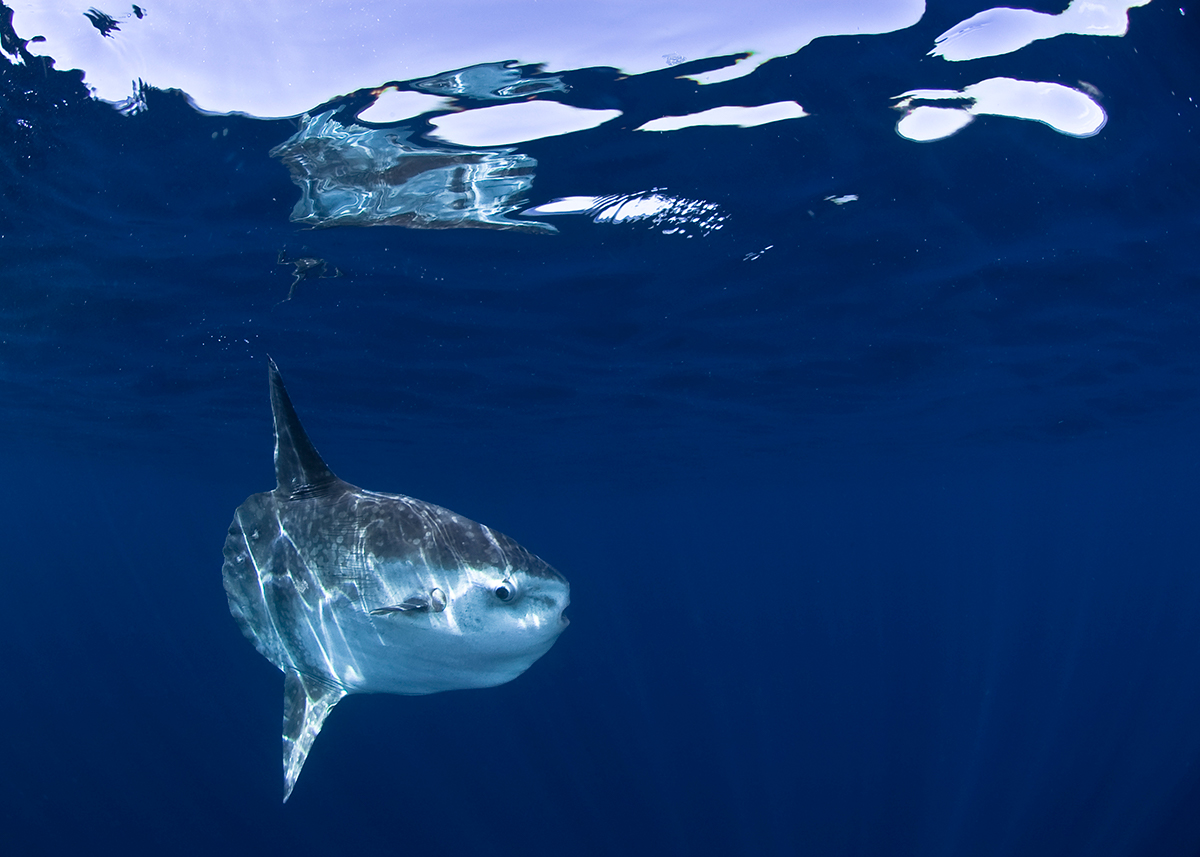
3. Bali, Indonesia
Bali delivers captivating shore dives for every diver, particularly at Amed and Tulamben. At The Drop Off, black volcanic sand creates a striking backdrop for pygmy seahorses, ghost pipefish, and mantis shrimp. Nearby, you won’t want to miss the world-famous USAT Liberty shipwreck. Photographers also head to this island for unbeatable muck diving. Secret Bay in northwestern Gilimanuk is a hotspot for macro life, such as mimic octopuses, bobbit worms, frogfish, and invertebrates aplenty. Bali is also one of the top destinations for mola mola and manta rays, and there are regular appearances by Napoleon wrasse, triggerfish, tuna, barracuda, stonefish, and sharks.
When to go: Bali’s waters average 27-30ºC (81-86ºF) year-round, though the best time to visit is May to November. It’s best to avoid December to February when heavy rain can reduce visibility during the monsoon. The highest chances of mola mola are August to October, and for mantas, it’s April to May.
Recommended Dive Resorts:
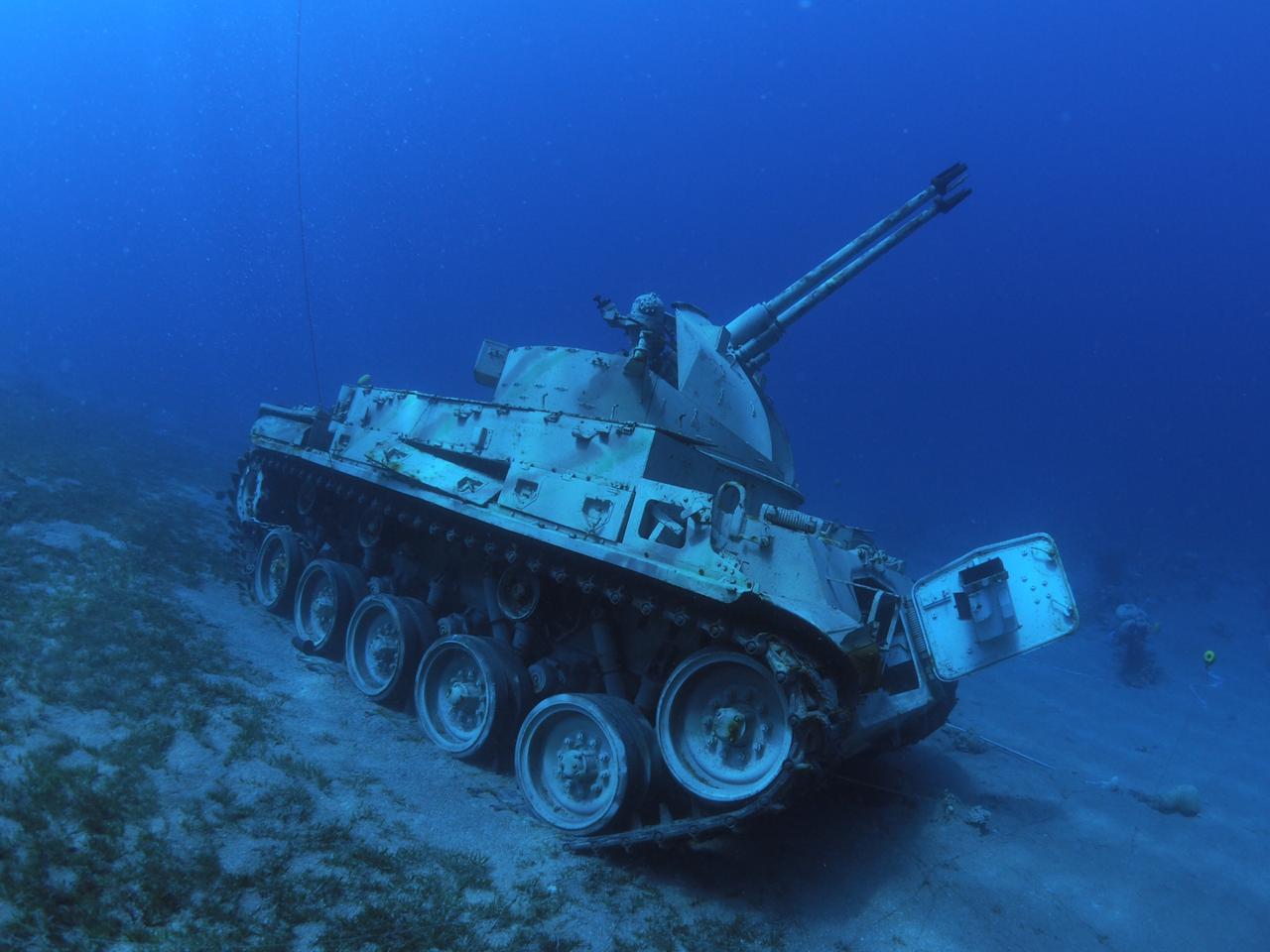
4. Jordan
This pristine destination only has 16 miles (26km) of northern Red Sea coastline, but almost all dives are accessible from shore. There’s plenty for naturalists, from the beautiful Japanese Garden to Power Station’s turtles and over 1,200 species of Red Sea corals and fish to spot. But Jordan’s cornerstone is military relics. The Cedar Pride is a canvas for corals, sea fans, and sponges. Seven Sisters combines impressive pinnacles with a US M40 tank, while the C-130 Hercules has its own pilot! In addition, an underwater museum features 21 wartime exhibits — including a helicopter and tanks. These are just some of the reasons to visit Jordan!
When to go: Sea temperatures range from 21ºC/70ºF in winter to 26ºC/79ºF in summer, so you can dive Jordan any time of the year. However, keep in mind that hot weather can be very uncomfortable during the peak of summer (May to September).
Recommended Dive Resorts:
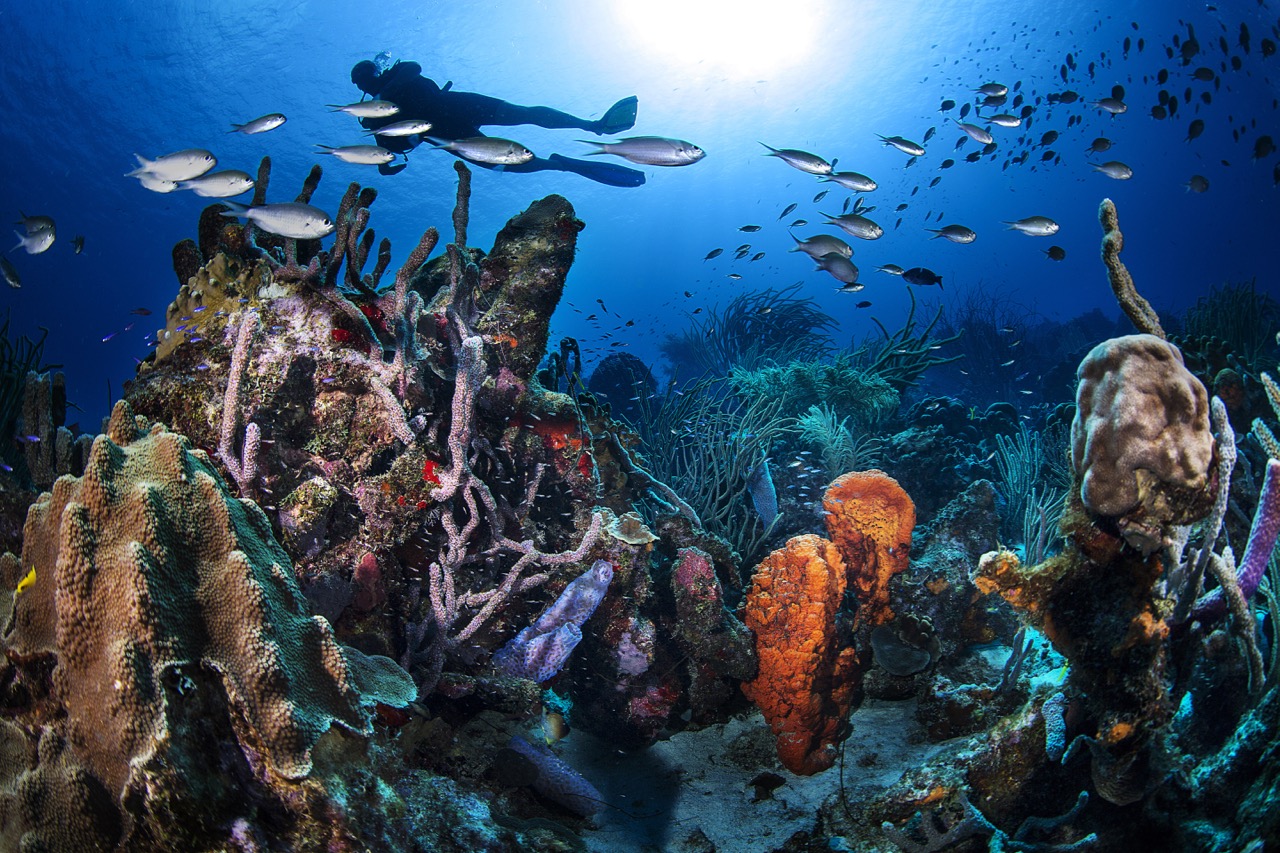
5. Curaçao
Like Bonaire, this Caribbean gem boasts clear waters, conservation, and exceptional shore diving. But, with sandier beaches, the entries and exits are often easier (albeit with a longer swim to the reef). The best diving is in the sheltered south. Blue Bay Wall drops down beyond 30m/100ft and is covered in corals and critters such as seahorses and frogfish. The nearby Garden is a gentler, sloping site with octopus, morays, and rays, while at Playa Grandi, you’re almost guaranteed a turtle. For metal, head to the MV Superior Producer — a favorite Caribbean wreck where you’ll also encounter angelfish, wrasse, barracuda, and giant tarpon.
When to go: The best time for Curaçao shore diving is April to November. This is the dry season and when you’ll experience sunnier, calmer weather and water temperatures around 29ºC/84ºF.
Recommended Dive Resorts:
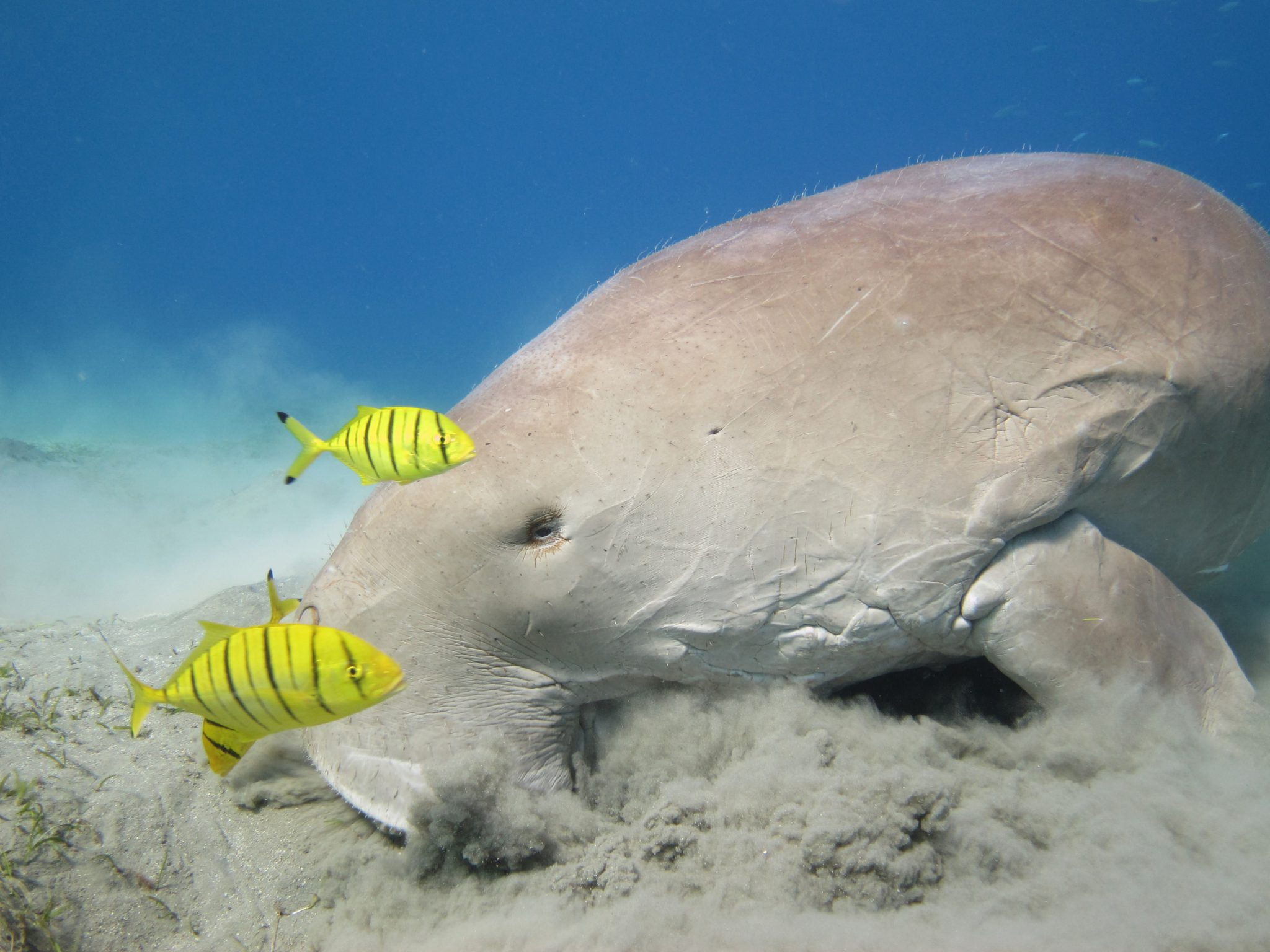
6. Marsa Alam, Egypt
Other Egyptian destinations may have a more established history of shore diving, but southernmost Marsa Alam is a rising star away from busier tourist hubs. Once limited to liveaboards, its 60-mile (100km) coastline is now a magical array of all-inclusive diving resorts and shore dives. At popular Abu Dabbab, you might see rare dugongs, guitar sharks, or turtles. The Hamada wreck is so shallow that even snorkelers can join the action. Plus, the Red Sea’s waters regularly reward visitors with crocodilefish, rays, squid, reef sharks, and tuna. Experienced divers might want to expand their vacation with boat trips to the famed outer reefs, where sharks and dolphins are found en masse.
When to go: There is year-round diving, with sea temperatures ranging from around 21ºC/70ºF in January to 30ºC/86ºF in August. From April to May, plankton blooms can affect visibility (but this attracts manta rays and whale sharks).
Recommended Dive Resorts:
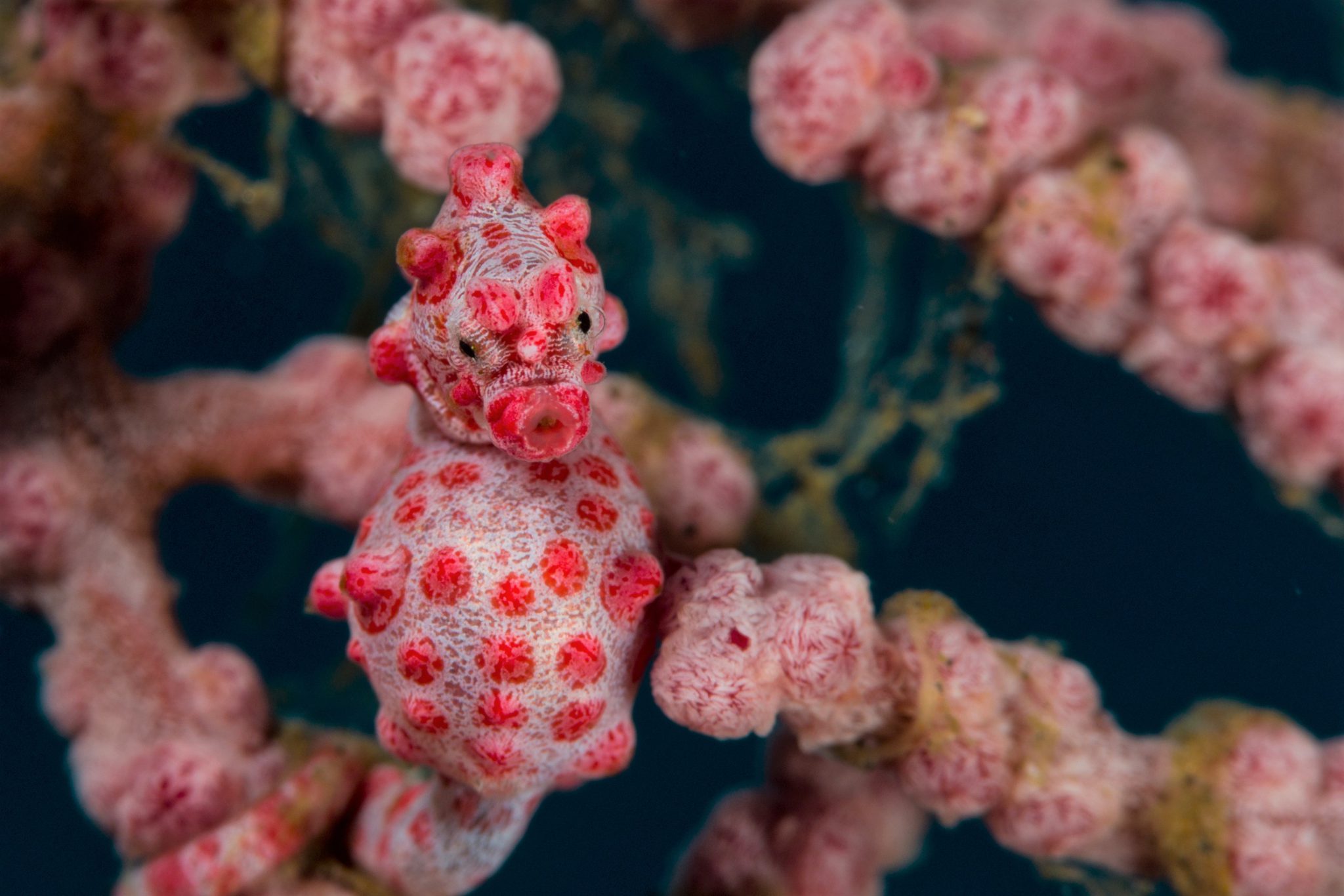
7. Dumaguete and Dauin, Philippines
On the island of Negros, Dumaguete and the Dauin coastline has some of the best shore diving in the world for muck divers. The friendly area is world-renowned for weird and wonderful macro life. Most shore dives are house reefs, where leisurely days can be complemented by exhilarating night diving. At dusk, Bahura is a top spot for vibrant mandarinfish. Sites include sandy seabeds, seagrass, and artificial reefs, such as tires or car wrecks. Photographers will enjoy searching for camouflaged critters, such as octopuses, frogfish, pipefish, and flamboyant cuttlefish. What’s more, for a change of scenery, the bright corals and bigger life at Apo Island are just a short boat ride away.
When to go: October to May is the best time to visit, with water temperatures averaging 27-29ºC (81-84ºF). Avoid traveling June to September, which is monsoon season in the Philippines.
Recommended Dive Resorts:
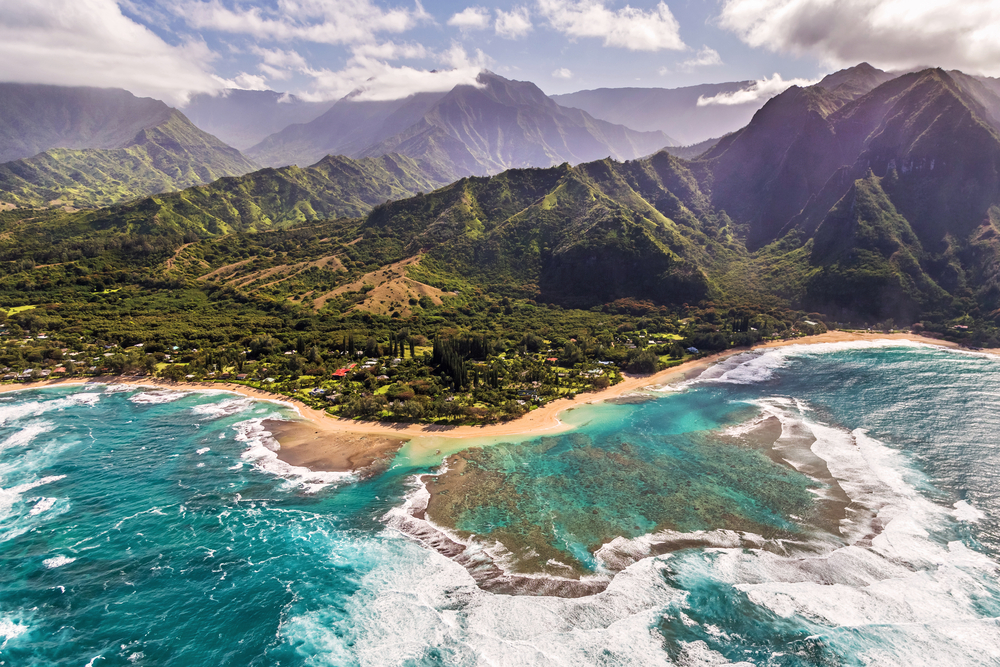
8. Hawaii, USA
With around 750 miles (1,210km) of coastline and eight major islands, Hawaii is a mecca for shore divers. As well as several wrecks (like the USS YO-257), Oahu is known for topological marvels like Kahuna Canyon and has some of the best shore diving in Hawaii. Big Island is world-famous for manta ray night diving near Kona and extensive volcanic lava tube formations at Kohala Coast. Kauai offers guaranteed sightings of sea turtles, while Molokai’s fringing reef (Hawaii’s longest) is home to Galápagos sharks, tiger sharks, triggerfish, and the elusive Hawaiian monk seal.
Off Maui, top-notch shore diving is found along the leeward western coast. Both sides of sheltered Honolua Bay, on the island’s westernmost tip, feature well-developed coral reefs that are separated by a sand bottom. About two miles north of Lahaina, Ka’anapali Beach offers easy access to Black Rock, a craggy, lava peninsula that reaches several hundred feet from shore. You have a good chance of spotting sea turtles here.
Every island is remarkably unique, and whether you choose to settle or hop between destinations, you won’t be disappointed when shore diving Hawaii.
When to go: You can dive most of Hawaii year-round, with water temperatures peaking at 27ºC/81ºF in September. However, hurricane season falls June to November, and Oahu’s north shore is only accessible during summer.
Recommended Dive Centers:
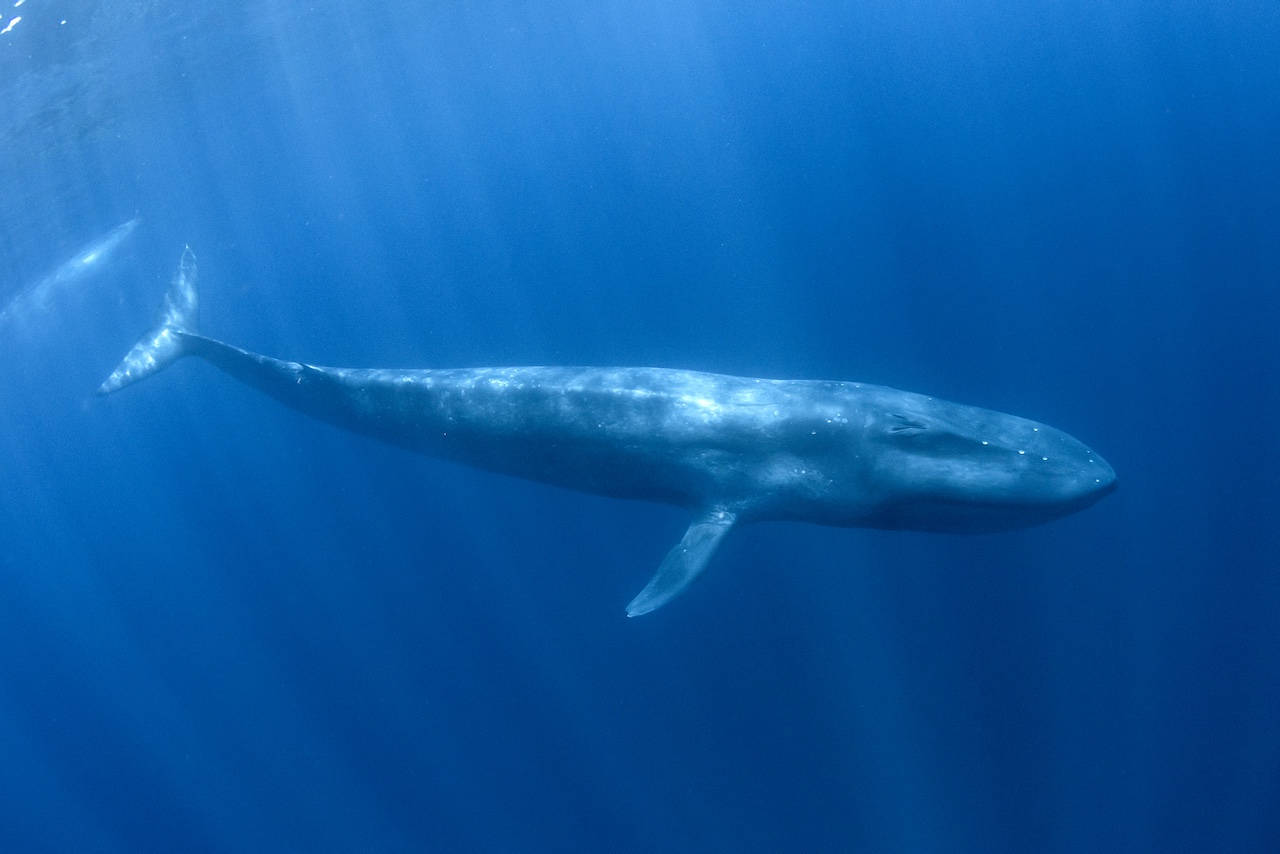
9. Timor-Leste
Also known as East Timor, this is Southeast Asia’s newest country. Its location in the Coral Triangle and the Indonesian Throughflow affords it some of the richest biodiversity in the world. The best shore diving can be found around the capital, Dili. Tasi Tolu and Pertamina Jetty are go-to destinations for muck diving, while Dili Rock dazzles with healthy coral gardens. Further east, Secret Garden showcases elaborate sponges alongside sharks, rays, and schools of glassfish. Timor-Leste is also a magnet for cetaceans: superpods of dolphins, sperm whales, killer whales, and blue whales have been spotted here.
When to go: Although waters remain a pleasant 26-28ºC (79-82ºF) throughout the year, visibility is best April to November. Tropical cyclone season falls between November and April. For the best chance of big mammal sightings, book your trip between September and December.
Recommended Dive Center:

10. Okinawa, Japan
Subtropical Okinawa is a prefecture of 160 islands in southwestern Japan. It’s deservedly gaining attention as the premier Japanese scuba destination with a plethora of dive sites, including caves, wrecks, WWII relics, and marine life. One must-visit shore dive is Maeda Point, a busy wall with a plethora of life, including angelfish, lionfish, clownfish, sea snakes, and octopuses. Here you’ll also find the Blue Cave, a sea cave where sunlight meets water to create mesmerizing hues. Motobu Peninsula’s sheltered bays offer reliable shore diving with unusual rock formations and promises of turtles. But, for something truly different, visit Sunabe Seawall’s underwater post box before diving through its kaleidoscopic soft coral gardens.
When to go: The best time to visit is during the warmer summer months (July to September) when waters reach 30ºC/86ºF. In the winter, this drops to 21ºC/70ºF; it’s still dive-able, you’ll just need extra thermal protection.
Recommended Dive Resort:
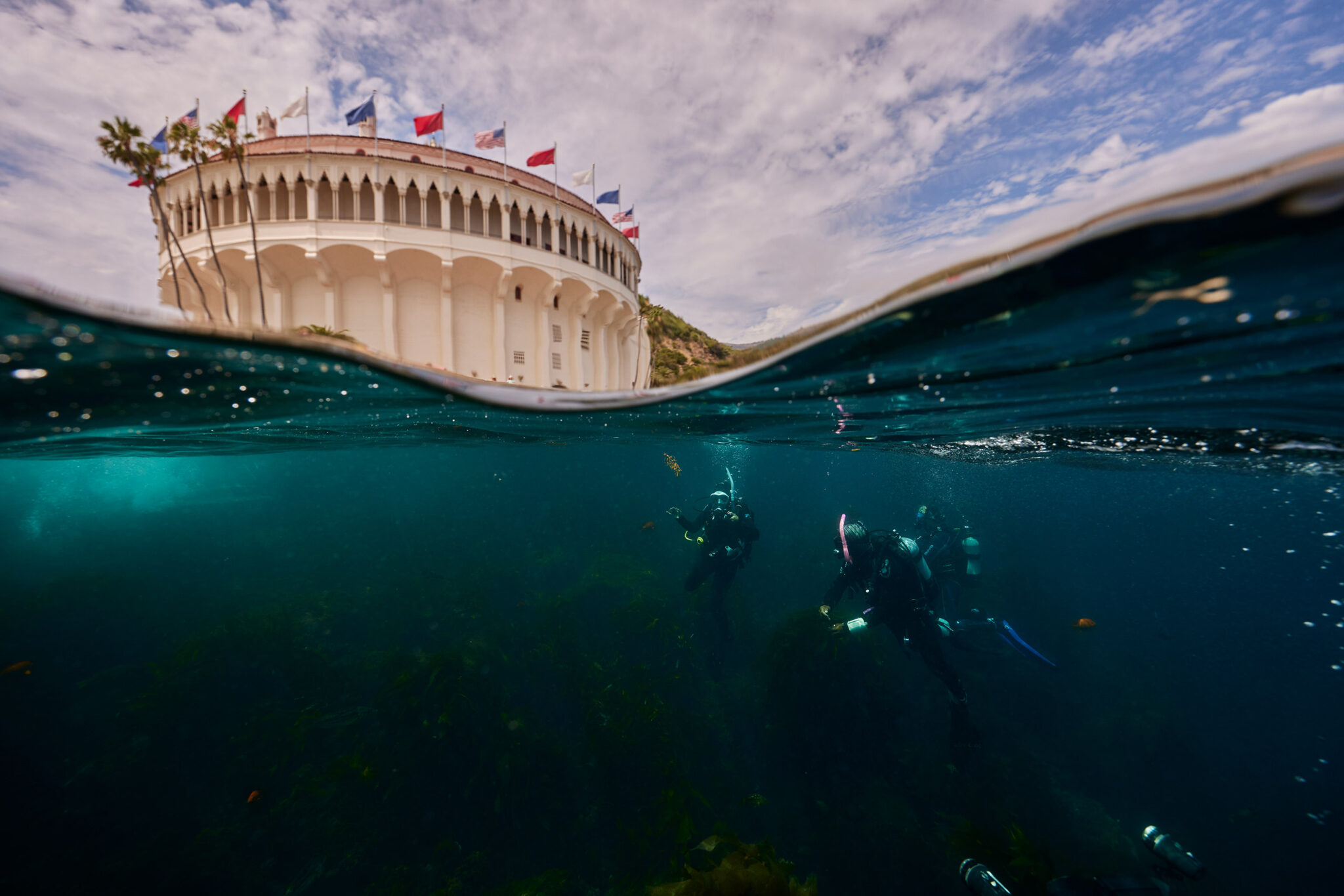
11. Southern California, USA
There’s plenty of shore diving all along the Golden State’s Pacific coastline, but we decided to focus on Orange and Los Angeles Counties in California in particular. Laguna Beach has at least a dozen sites perfect for shore diving and snorkeling, with average depths of 20 to 50 feet/7 to 15 meters. Its underwater portfolio includes the mini-wall reefs of Diver’s Cove and Mermaid’s Grotto, which, if you’re good on air, you can do on a single tank. (Keep an eye out for garibaldi and spiny lobsters!) In addition, Crescent Bay’s Seal Rock is a nearshore site where divers can interact with juvenile sea lions.
The eastern side of Little Corona, a marine reserve in Corona del Mar State Beach, offers a productive reef system that is located about 100 yards/meters out from the cliff overlooking the beach. A successful kelp restoration project here in the 1990s has made this a dynamic place to dive by providing shelter for garibaldi, opaleyes and señorita wrasse.
When to go: The best time to dive in Southern California is from August to October. During these months, the water is the warmest and the visibility is at its best, sometimes exceeding 30 feet/10 meters. This is due to the decreased plankton blooms compared to earlier in the summer.
Recommended Dive Centers:
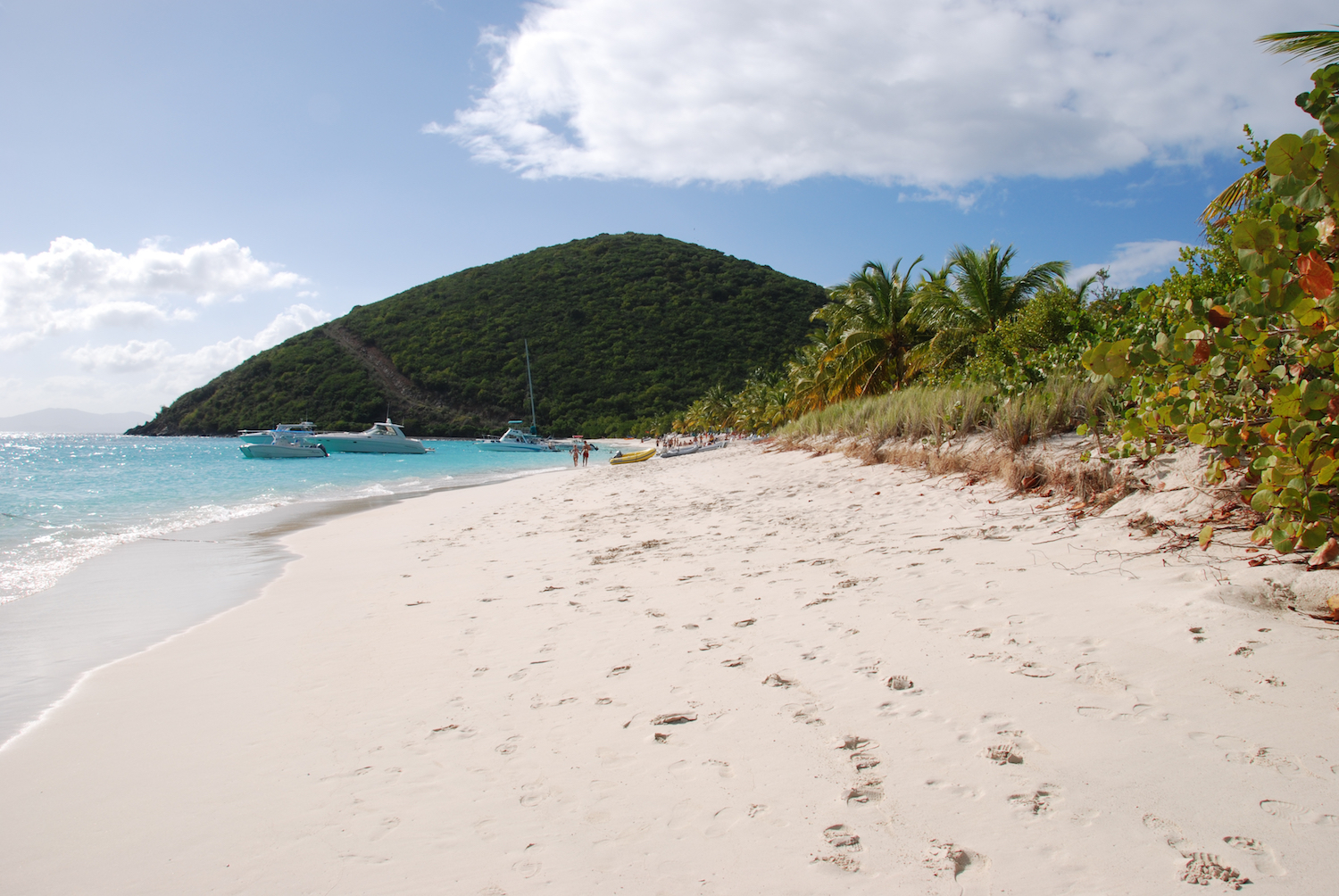
12. U.S. Virgin Islands
St. Croix, St. John, and St. Thomas, the trio of islands that make up the U.S. Virgin Islands, are renowned for their postcard-perfect beaches. With reefs only a short distance from shore, these beaches are an ideal place to start a dive. Off St. Croix’s north side, Cane Bay Beach offers a spectacular coral- and sponge-coated wall and clouds of tropical reef fish about a 300-foot/91-meter paddle from the boat ramp. St. John’s Trunk Bay is an excellent shore dive, although it’s also popular with the cruise ship crowd.
For a quieter, more secluded spot, try Flanagan’s Cay off the island’s southeastern coast. Off St. Thomas’s east end, Coki Beach offers a fringing reef and aquarium-like conditions for reef fish like yellowtail snappers, blue tangs and parrotfish less than 300 feet/91 meters from shore.
When to go: The ideal time for scuba diving in the U.S. Virgin Islands is between December and May, during the dry season. This period offers the clearest and calmest waters, making visibility excellent, often extending beyond 100 feet/30 meters. Water temperatures during these months are comfortable, generally ranging from 79ºF/26ºC to 83ºF/28ºC.
Recommended Dive Centers:
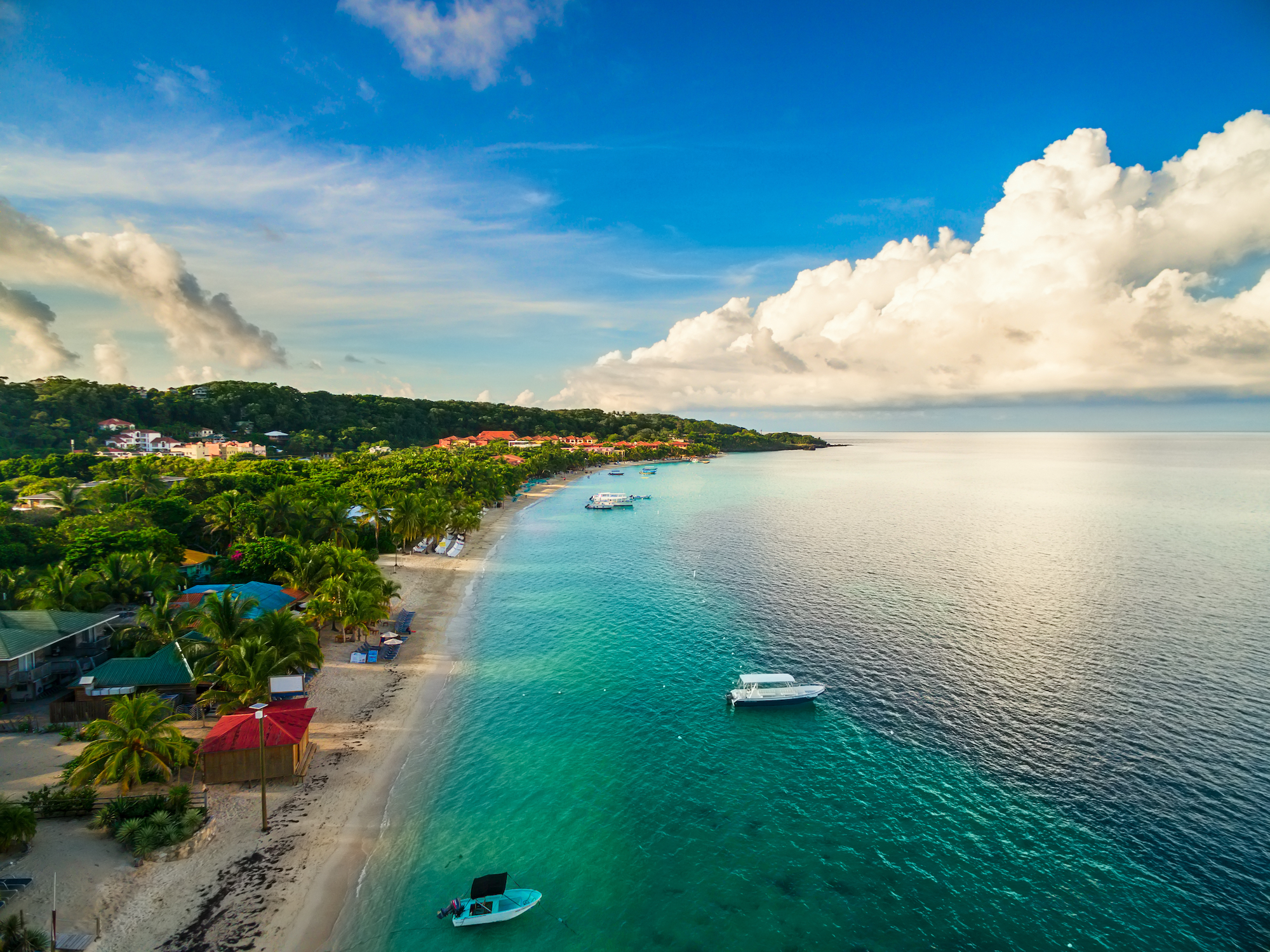
13. Roatán, Bay Islands, Honduras
With the fringing reefs off Roatán only a 900-foot/275-meter swim from shore, many of the island’s resorts offer 24/7 diving on reefs just a few fin kicks from their docks. It’s a leisurely swim to the Prince Albert, a 140-foot/43-meter-long island freighter located in CoCo View Resort’s “Front Yard,” on Roatán’s south central coast. Just east of the Bay Islands Beach Resort is Spooky Channel, a huge, otherworldly tunnel in the reef that begins off Sunnyside pier and bottoms out at about 95 feet/29 meters. Anthony’s Key Resort’s house reef is packed with blue tangs, parrotfish, angelfish and damselfish, just a selection of what you’ll see while diving in Honduras.
When to go: The best time to go scuba diving in Roatán is during the dry season, from February to September, when you’ll find calmer seas, better visibility, and warmer waters.
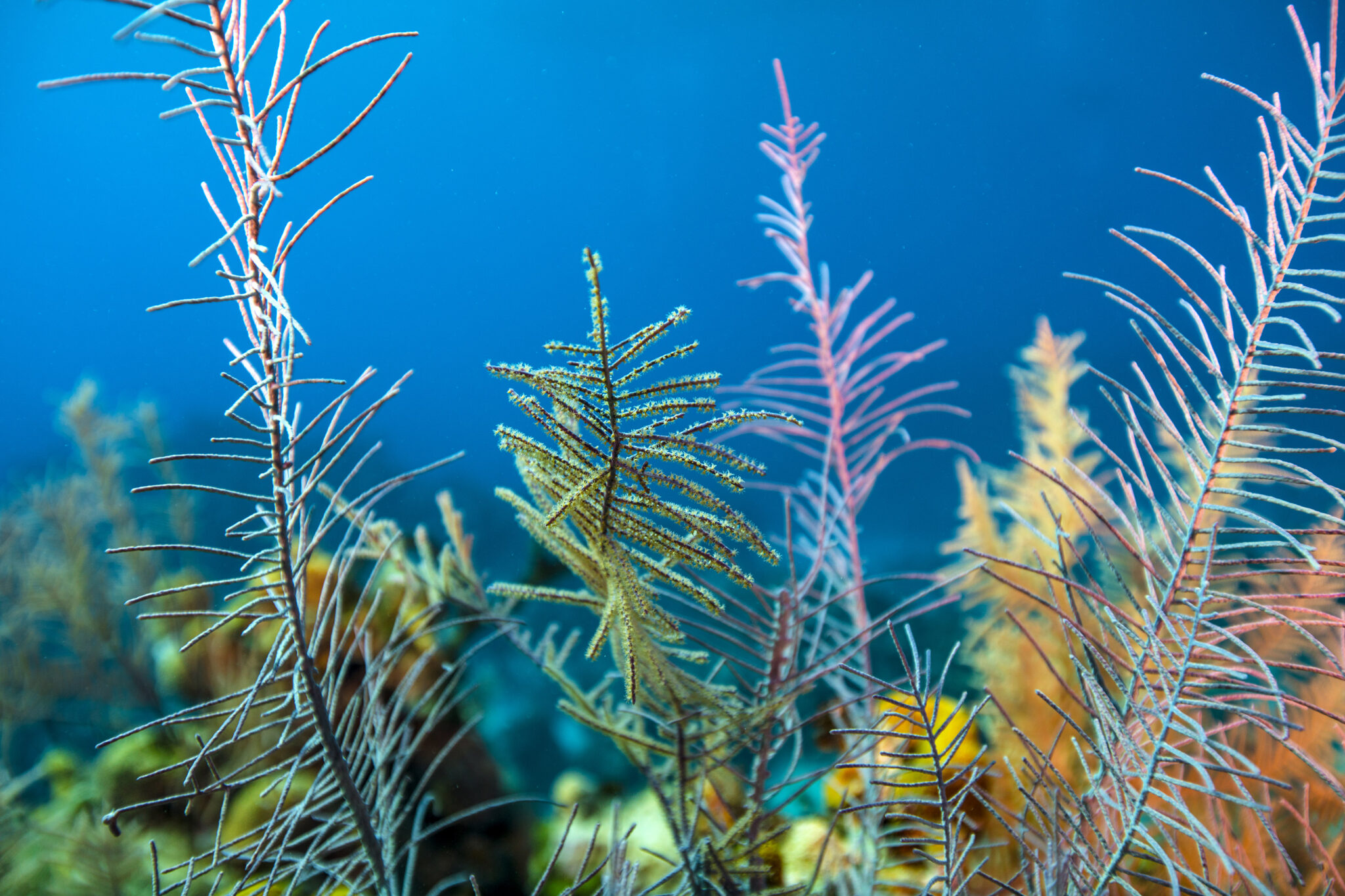
14. Grand Cayman
Although many of Grand Cayman’s famed reefs and walls can be reached only by boat, there are a number of bayside bijous to explore. On the island’s west end is Eden Rock and Devil’s Grotto, a maze of grottoes and caverns where schools of silversides and silver tarpon hang out. It’s a long swim — about 450 feet/138 meters — but well worth it to reach Babylon, just east of Old Man Bay on Grand Cayman’s East End. It’s best to paddle out to the buoy and then drop down on the wall.
When to go: The best time to go scuba diving in Grand Cayman is generally during the dry season, which runs from November to April. During these months, the weather is typically stable, better visibility, which can exceed 100 feet/30 meters on good days. The water temperature is also quite pleasant during this time, ranging from 78ºF/26ºC to 82ºF/28ºC.
Recommended Dive Resorts:
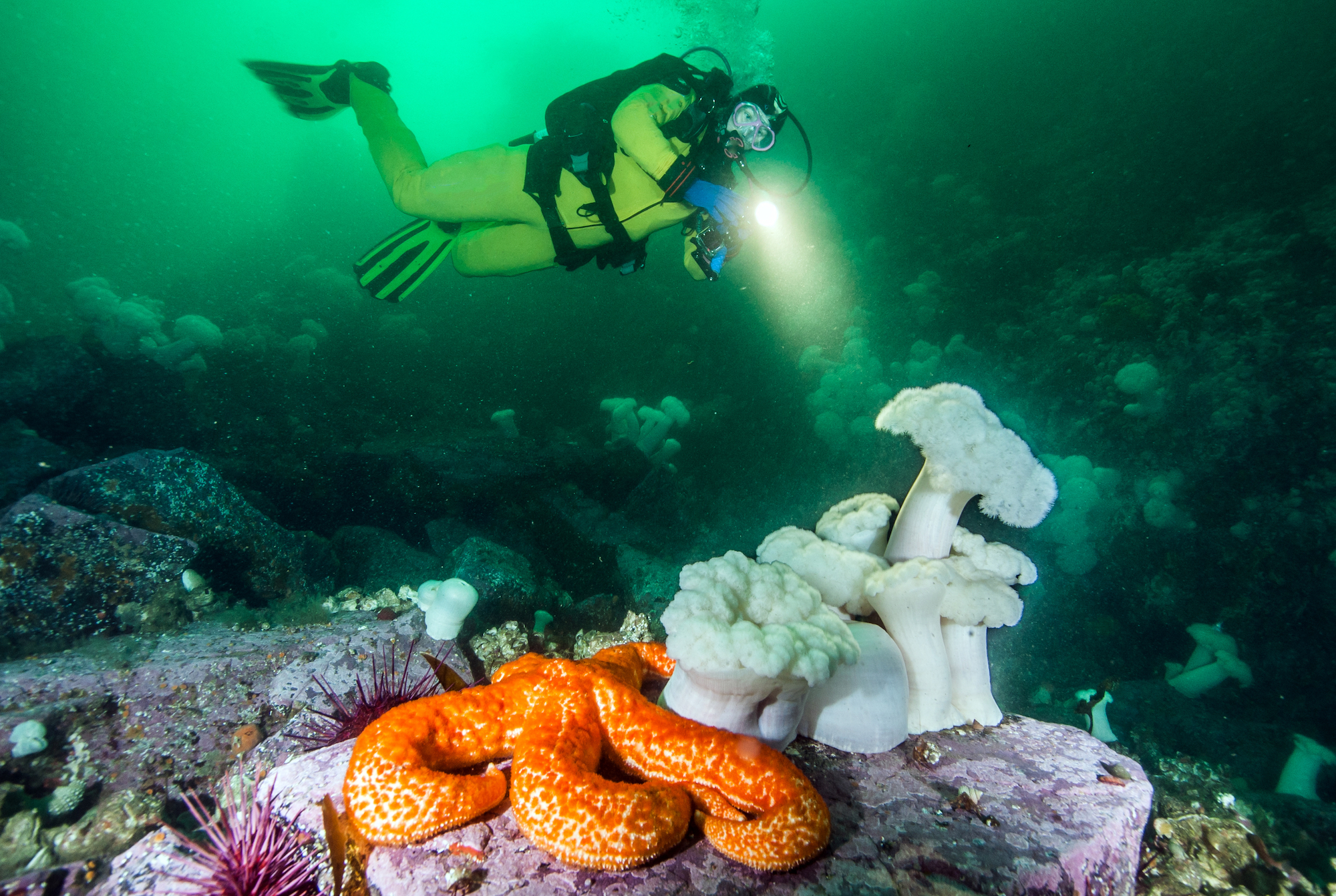
15. Vancouver, Canada
If you are a drysuit diver, then Canada‘s Vancouver region has some stunning and intriguing dive sites. Over 40 emerald-green shore dives can be found along the beautiful coast of Vancouver and Vancouver Island. Some of the marine life highlights here include fields of strawberry anemones, wolf eels, an array of nudibranch species, cryptic crustaceans, and giant pacific octopus.
When you are not underwater, this region has spectacular scenery and phenomenal trekking to boot!
When to go: Summer is the busiest time for diving here as divers seek warmer waters. Annual temperatures range from 4-9ºC/39-48°F. Although the summer months are slightly warmer, the best visibility, marine life sightings, and diving conditions are throughout the Northern Hemisphere’s winter months of November to February.
Recommended Dive Centers:
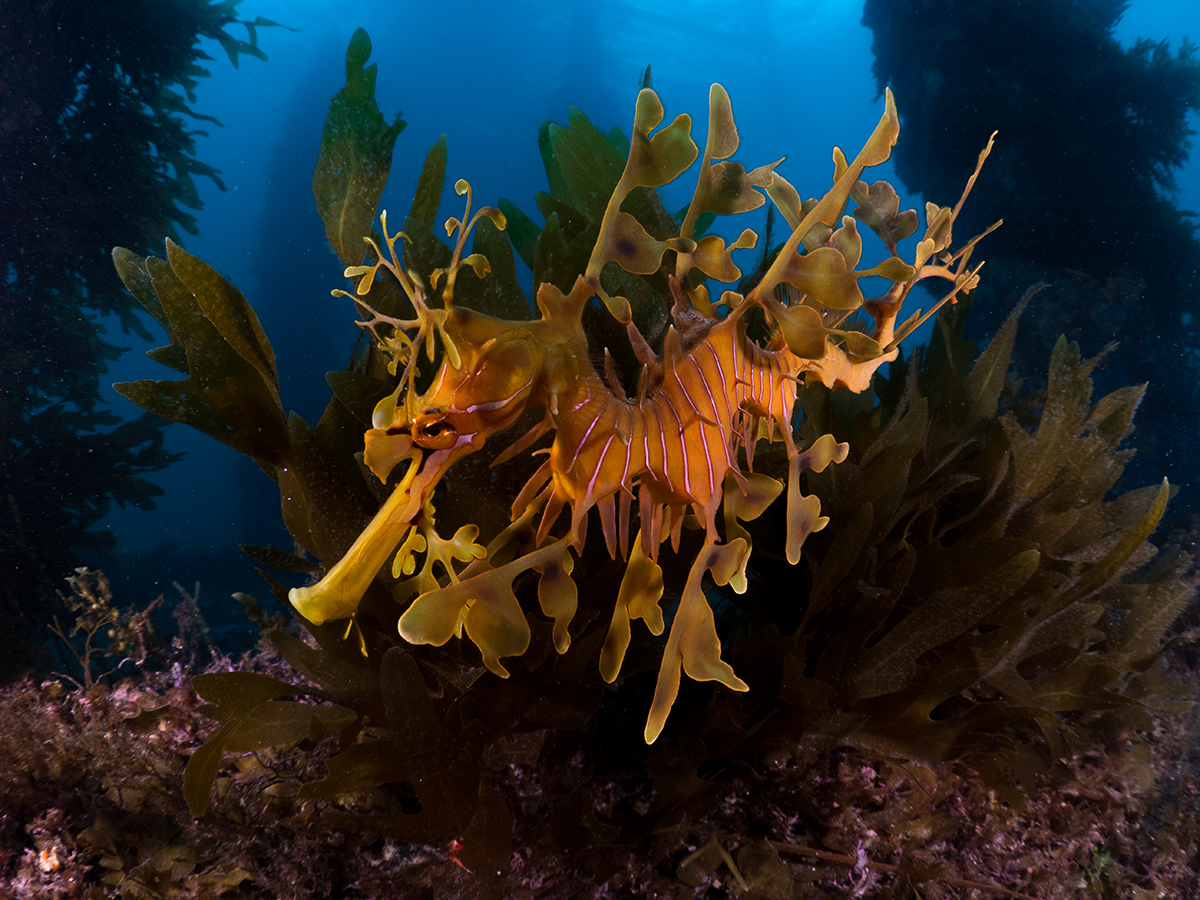
16. South Australia
South Australia offers some incredible shore and jetty dives. The many piers that dot the coastline are home to some phenomenal and endemic species, including leafy seadragons, weedy seadragons, nudibranch, and frogfish. Many of the jetties, such as the famous Edithburgh and Rapid Bay Jetties, are well set up for divers with platforms and ladders for easy entry and exit. For macro underwater photographers, the endless critters are a dream, and wide-angle shooters will not be disappointed by the array of colorful soft corals that grow on the pylons of the piers.
When to go: During the Australian summer months (October to May), water temperatures are warmer, but diving is possible in South Australia all year round.

17. Coromandel, New Zealand
Located on New Zealand‘s North Island, Coromandel is stunning both on land and underwater. There are good reasons why this spot is known for being New Zealand’s best beach destination.
Dive sites here are suitable for all level of divers, from beginners to professionals. These sites are teeming with marine life and packed with interesting underwater topographies, including gullies, swim-throughs, and caverns. Marine life sightings include impressive sponge gardens, crayfish, schools of blue maomao, kingfish, moray eels, stingrays and marlin. Depending on when you dive, whales and turtles are a possibility, too!
Recommended Dive Centers:
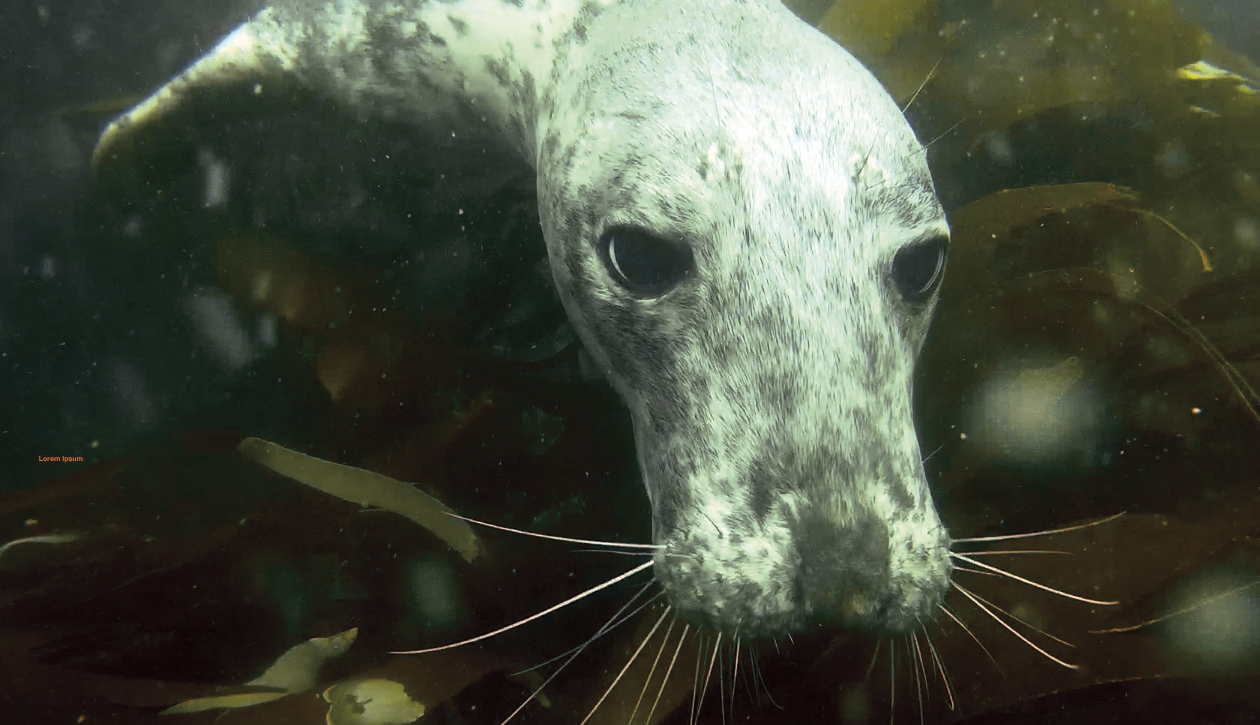
18. The United Kingdom
The United Kingdom might not immediately spring to mind when thinking of diving, but there are incredible shore dives along the coasts of England, Northern Ireland, Scotland, and Wales.
Some of the most iconic diving areas include Brighton, the Farne Islands, Cornwall and Swanage Pier. For wreck and experienced drysuit divers, Scapa Flow in the Orkney Isles off Scotland is a must.
Marine life in the United Kingdom is incredibly varied, and divers might see grey seals, a spectrum of nudibranch, an incredible array of crustaceans and cephalopods, harbor porpoises, sunfish, leatherback turtles, and even basking and angel sharks.
When to go: Diving in the UK is available all year round, however, if you prefer to dive in a wetsuit (7mm with a hood is recommended) opposed to a drysuit, it is best to dive during the late summer months of July and August.
Want Even More of the Best Shore Diving?
Of course, it’s impossible to cover all the world’s best shore diving destinations in just one article. If you’re looking for even more ideas, why not try:
Or, check out these 12 incredible house reefs from around the world.
Book a Shore Diving Trip Today
Are you ready to step into your best shore diving adventure? Then download the PADI Adventures App or visit PADI Travel to find inspiration and book your next scuba vacation!
